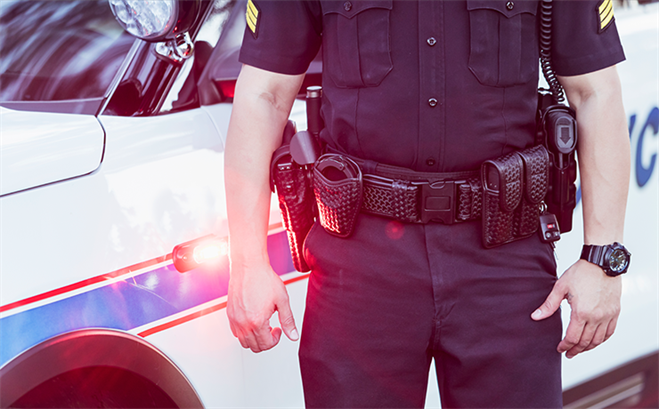First Responders Persevere Amid Pandemic
July 20, 2021 by Zach Wood

The COVID-19 pandemic took the world by surprise, creating many unknowns for everyone. While many people had flexibility in their work situations, others, like essential workers did not. The Lehigh County Communications Center in Pennsylvania - and many others like them - continued hard at work by responding to calls and dispatching first responders to where help was needed.
These first responders and dispatchers were expected to carry out their work duties like any other day, but in a world that was now filled with increased risk of exposure to a deadly virus that seemed to put most of the world on pause. Determined to protect their communities, they still showed up daily with limited and scare personal protection equipment like face masks and gloves, and along the way found new ways to protect themselves in this unforeseen pandemic.
Dan Bellesfield, 9-1-1 Operations Coordinator for the Lehigh County Communication Center, said they dispatch for dozens of police and fire agencies that serve the roughly 360,000 people that are living in their jurisdiction. Bellesfield said he and his team utilized their computer-aided dispatch (CAD) software as much as possible while trying to navigate the ‘new normal’ perpetuated by the Covid-19 pandemic.
“We did a lot of things from a response plan perspective to alter responses due to COVID, like call-taking and questionnaires,” said Bellesfield.
With his extensive background in public safety, Bellesfield said he’s the type of person who plans for the worst. In this case, his idea of a worst-case scenario was greatly underestimated.
“In our business, you have to adapt, and we make sure to plan for our backup,” explained Bellesfield. “Most of our backup plans were based on equipment failures, we never thought we’d have to have a plan to quarantine our staff.”
Regardless of the unfortunate surprises Covid-19 created, the team at Lehigh County quickly came up with a plan. The communication center soon had two alternative facilities to use in case there was a Covid-19 case within the main building. The CAD software was deployed on laptops that dispatchers could work from, regardless of their location. Bellesfield said their team quickly began tracking known covid exposure locations in the system.
“We started to track these locations within the software,” noted Bellesfield.
“From that point, we focused on what we could do with the custom features the technology had to offer like building our personalized Covid-19 questionnaire that could be modified as time went on.”
This questionnaire was packed with essential questions the dispatchers would be required to ask anyone who was calling in before a call for service could be in progress. This information collected by the dispatcher was then confidentially relayed to the first responder who would be heading to the scene.
This helped the officer, firefighter, or EMS worker involved to be well informed of specific details about the people they would soon be interacting with such as if they’d been exposed to covid-19, or if they had any symptoms of the virus.
As Covid-19 became more wide-spread, Bellesfield says their dispatchers narrowed down the questionnaire.
“We just started treated everyone as if they had Covid-19 to be safe,” said Bellesfield. “We decided we didn’t need to ask all of these granular questions anymore and shortened the list to more straightforward questions like if the person had recently received a positive test result.”
He said the ability to adapt to the continuously changing situation made a huge difference for his team.
“It was relieving to have software that was flexible for a situation like this,” said Bellesfield. “As an administrator, I could sit at home and change those questions in a matter of two minutes, hit save, and it’s live to the whole system.”
Much like the rest of the world, officials in Lehigh County like Bellesfield continue to navigate the Covid-19 pandemic from a public safety perspective. While the virus is not gone, Bellesfield feels that his team’s actions had a positive impact on their community.
“I think this protected our first responders and helped them to stay in the know and err on the side of caution,” said Bellesfield.